When we think of content curation we often think of link packs or Buzzfeed sites that group, organize, and share information on a particular topic. Though this aggregation of information is perhaps the most common type of curation, it isn’t the only way to collect and share content in the digital sphere.
There are actually several different methods of locating, grouping, organizing, and sharing content and each one serves a different purpose in the online world. Thought leader, best-selling author, and self-described “nice guy” Rohit Bhargava breaks curation down into 5 different models in his Content Curation Manifesto:
- 1.
Aggregation
- – Pulling relevant information on a particular topic into a single location. This is the most common type of content curation on the web.
- 2.
Distillation
- – Collecting only the most important information and ideas on a specific topic.
- 3.
Elevation
- – Identifying larger trends by sharing smaller musings and pieces of content.
- 4.
Mashup
- – Generating a new and original perspective on a topic by merging or juxtaposing existing content.
- 5.
Chronology
- – Organizing historical information to show how a topic evolves over time.
“Today’s most popular people on the web aren’t the most prolific content creators. Many of them are collectors of other people’s content. Being able to curate genius content is a very valuable skill,” writes Blake Morgan in Forbes. However, curation doesn’t necessarily have to be a compilation of other people’s content. Creators like author Austin Kleon and comedian James Breakwell use Tumblr and Twitter to curate a mixture of their own art and comedy as well as outside links in one updating channel.
It’s also important to keep in mind that curating content isn’t just about gathering content, organizing it around a theme, adding commentary, and setting it free on the internet. People are using fresh content to achieve specific goals like increasing brand awareness, becoming a thought leader in a given field, or improving SEO. Below we’ve outlined how curated content can achieve these goals, and provided a few examples of people and brands that are already doing it well.
1) The Goal: Going Viral
Always Have Integrity
Creating or drawing attention to a piece of content that will get more shares is a great way to build your personal brand or increase brand visibility. However, writing the perfect Tweet or sharing the right video isn’t that simple, and it’s nearly impossible to capture everyone’s attention with a single content atom, a notion supported by Morgan who says;
“You don’t have to curate content that will appeal to everyone, you just have to make sure that the content can appeal to enough of the right people.”
At the end of the day people are most likely to share something that they connect with. If it sparks an emotion, makes them laugh, gasp, or tear up, it’s more likely to gain traction on the social media channels. One of the internet’s most infamous viral videos, Charlie bit my finger, wasn’t staged. It was a genuine moment that people connected with, and has since been viewed over 825,000,000 times.
Both Brendan Kelly and James Breakwell curate their thoughts and nuggets of comedy through Twitter. Their popularity and large followings demonstrate how content with integrity – that is, content they genuinely enjoy – results in more shares, and helps develop strong followings.
Brendan Kelly is the bassist and singer for The Lawrence Arms, but is perhaps better known for his Twitter account Nihilist Arby’s, where he Tweets in the character of an apathetic Arby’s employee to over 106,000 followers. “Twitter is such a great medium,” Brendan Kelly told Adweek, “but it’s misunderstood, generationally. It’s like an awesome newspaper where everyone can customize what they get by following certain entities, whether they want comedy, politics, or naked chicks. But then you have these dumb corporations that just don’t get it you know?”
In response, Kelly created a Twitter account where he Tweets in the persona of a restaurant chain’s social media manager who has ‘just lost it,” and can’t summon the energy to send out another banal Tweet. Thus, Nihilist Arby’s was born, and quickly amassed a large following. Kelly’s Twitter account could be considered a “mashup” because he combines an existing brand and an existing trope to create a new perspective on a topic.
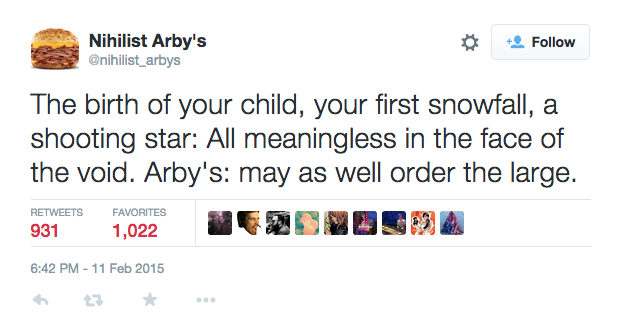
Though Kelly’s brand of humor is not for everyone, his strong Twitter following demonstrates that in the end, it’s genuinely candid and sincere content that succeeds. Millennials can spot disingenuous content from a mile away and canned messages won’t get the same attention from this demographic. Kelly is proof of this – at one point data collected by Simply Measured revealed that Nihilist Arby’s was getting more Twitter engagement than the actual Arby’s restaurant chain. “I am not cranking them out just to do it,” Kelly explained to Adweek. “If it doesn’t make me laugh, I don’t tweet it.”
Similarly, James Breakwell, a comedian and cartoonist, “often writes about his wife and his kids and how stupid they think he is.” Breakwell also uses Twitter to curate his comedy, musings, and cartoons. Like Kelly, Breakwell demonstrates how genuine content is the best way to increase shares in the realm of social media. He also advises keeping things short and sweet, and notes that content featuring images and videos get way more clicks.
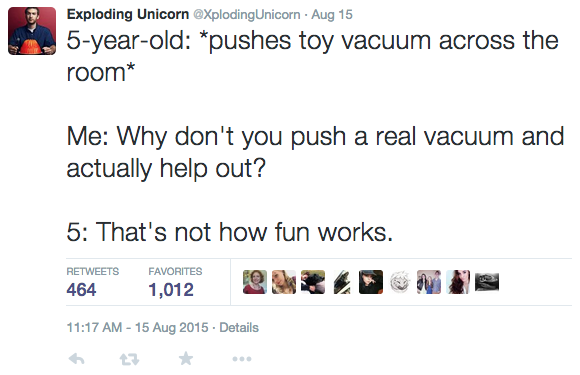
When curating content – whether it’s a distillation of your own thoughts and ideas or an aggregation of links – ensure that it’s something you’d actually want to read, and doesn’t serve any alternate agendas. When we spoke with marketing expert Brian Solis he offered some unconventional but important wisdom; “the advice I have is to stop acting like marketers, if you have to market that means that there is something wrong.” Morgan reinforces this point by pointing to expert curators like Maria Popova who “hopes you’ll find her stuff interesting but that hope doesn’t influence the composition of her collage, which is completely personal, the product of an editorial sense all her own.”
2) The Goal: Become a Thought Leader
Promote Quality Over Quantity
To become a thought leader in your field you need to become a trusted source of information. In order to develop this reputation amongst your peers you need to provide quality content. Yes, it can be difficult to be heard over all of the noise, but simply adding to the chatter won’t get you anywhere. “The more people can count on you and the quality of your content sharing, the more they will eventually support you, reshare and click on your links, and recommend you to others,” advises Jay Baer.
Curated content is a necessary part of the path to thought leadership. “Thoughts, words, and ideas of others can be helpful to establish yourself as a value added resource and as a destination for information,” says marketing expert Brian Solis. For Solis, When done right, content curation establishes your site’s reputation as a reliable, thought-provoking source of information. Curation also helps your brand gain exposure by using another brand’s content as a source for ideas, improving the authority of your site, and fostering greater trust with the audience.
The late David Carr was a great example of thought leadership through curation. His Twitter account and column The Media Equation at the New York Times was a reliable resource for great content and he was never shy about adding his own opinion or perspective into the mix. His Twitter was a curated stream of retweets from thought leaders mixed with his own musings, articles, and shared content. This stream was a great resource for anyone looking to tap into the world of pop culture, journalism, and digital media. Reliably good content (coupled with integrity) turned Carr into a powerful thought leader in his field.
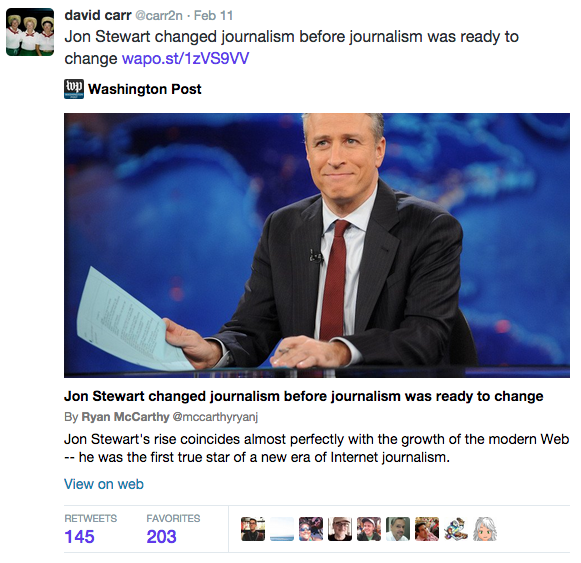
Artist and author Austin Kleon is also a great example of content curation. His weekly email newsletter is a collection of links to the thought leaders who inspire him, and his blog and Tumblr features a good mix of his own content as well as links to interesting artists and authors around the web. Like Carr, Kleon is always sure to bracket his links with his own commentary. Both Kleon and Carr demonstrate that thought leadership is built not only through original content, but also sifting through the endless content on the internet and consistently presenting the most compelling content to your audience.
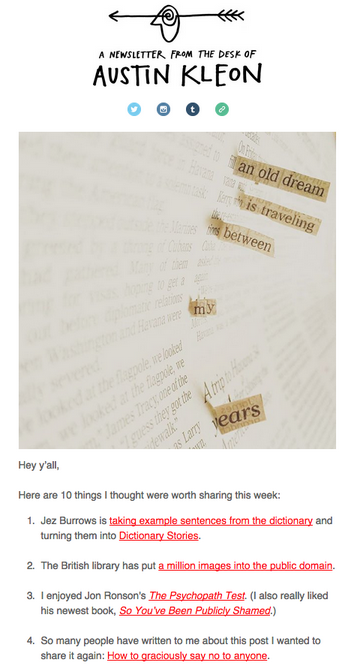
3) The Goal: Rank for SEO
Give More Than You Take
Curating a weekly list of links was once a great way to let search engines know that you’re a credible source of information and get noticed on the web. However, just slapping a few links and quotes together in a blog post or weekly email won’t get you anywhere. The most important thing to remember is to curate for your audience – not for SEO. This means giving more than you take from others, and contextualizing any links with your own opinions and insights.
As a writer your job is to publish your own material that is supported by information from a credible source – otherwise you develop a reputation of stealing and duplicating content, which will ultimately hurt your SEO. Annotating curated pieces with your own commentary will allow search engines to find your content and identify it as a separate source of information when indexing and ranking results.
Variety is another essential component of curation that has positive ramifications for your SEO rankings. Giving your audience more diversity within your own published material and occasionally linking to blogs, websites, and social channels will help search engines (and ultimately your readers) identify your website as a credible and valuable source of information. Committing to a long term plan wherein you curate, publish, and promote your own contentwill help your SEO more than simply stuffing your blog post with keywords, quotes, and less credible links.
In addition to variety, curators have to update frequently. You can’t just create a link pack and then walk away for a week. Your reputation improves by updating your site with fresh content on a regular basis because search engines will index them more often than sites that update less frequently.
My Modern Met is a great example of a site whose curation is optimized for SEO. The blog, which inspires the creative community with content on art, design, and photography, publishes frequently and from a variety of sources. Their Twitter is packed with links to great content that gets updated almost daily while their blog features content with their own opinions and insights.
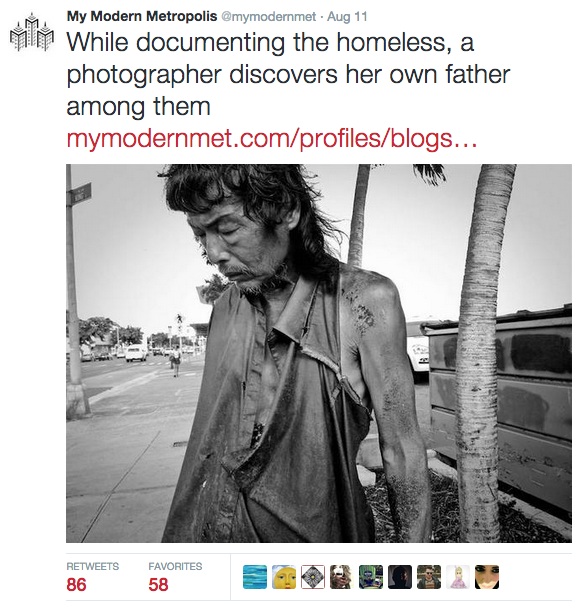
Similarly, iQ is a stream of content curated by Intel’s own employees. Like My Modern Met, iQ posts regularly from a variety of sources with their own commentary on each content atom. “In a nutshell, our core objective is to share and source content that inspires, educates, entertains and helps all of us to better understand our modern world,” explains Managing Editor Luke Kintigh. This aggregation of content covers diverse topics including tech news, sports, gaming, and health.

Always Attribute
Regardless of your goal, when it comes to curation proper attribution is essential. “Every piece of information we encounter was put before us by someone who worked to create it, discover it, or bring it to our attention” writes Maria Popova, founder of the Curator’s Code and the woman behind Brainpickings (another great example of content curation). As a curator herself, Popova is adamant about proper attribution in the online community. By tipping your hat to the person who brought you to a specific piece of content curators maintain their integrity by acknowledging the original publisher as a trustworthy source of information. This recognition ultimately improves the quality of their own content with potential SEO benefits as well. Most importantly, showing “link love” allows “us to discover new wonderlands through those we already know and trust.”
2024 State of Marketing Report
Your golden ticket to crush your goals with data-driven insights!
2024 State of Marketing Report
Your golden ticket to crush your goals with data-driven insights!







